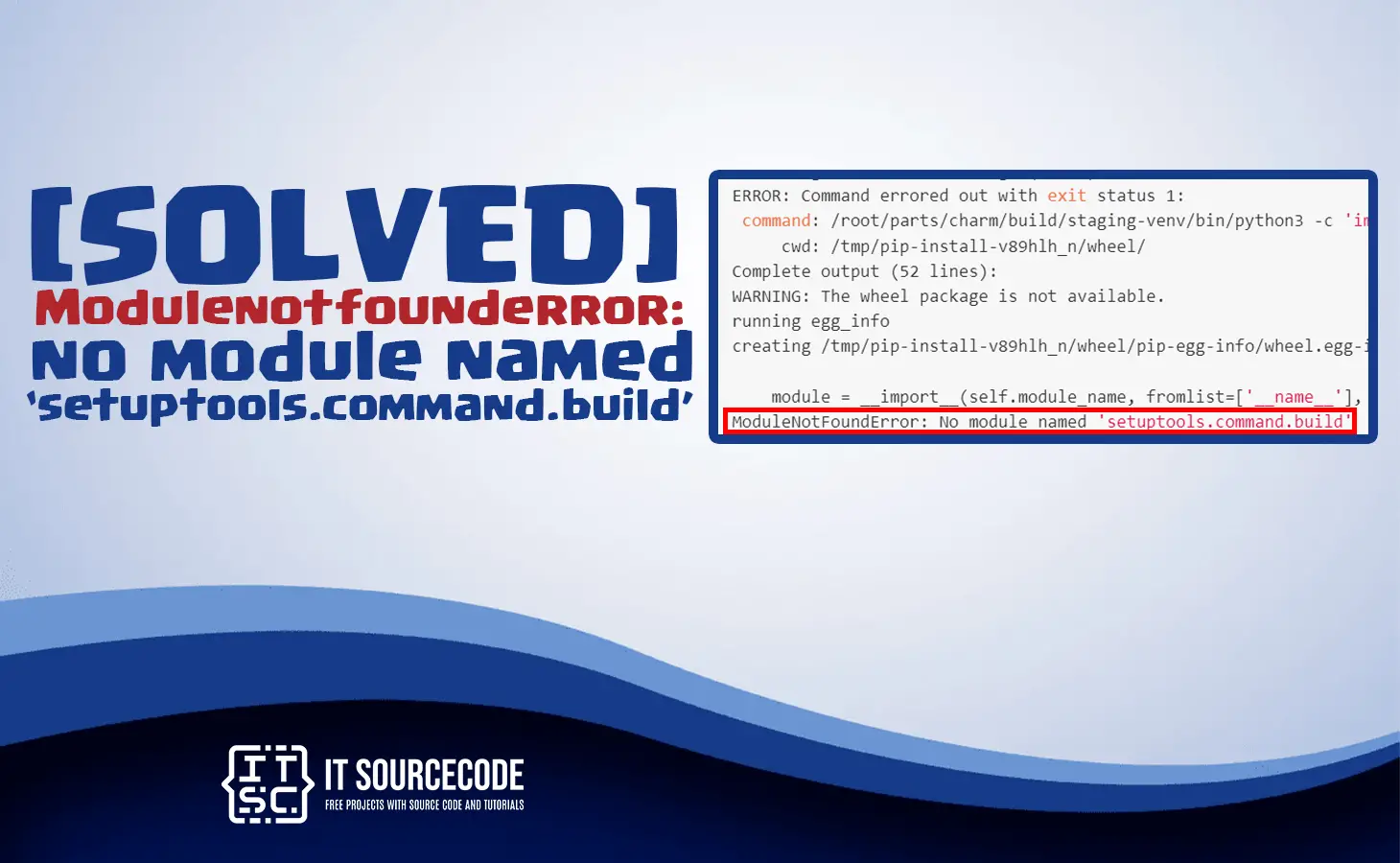The modulenotfounderror: no module named ‘setuptools.command.build‘ error usually occur because the Python cannot find the setuptools.command.build module.
This will occur when you do not install the setuptools package, or if it’s installed but not properly configured.
Also read the following resolved error:
- Modulenotfounderror: no module named ipython [FIXED]
- Modulenotfounderror: no module named ‘win32api’ [SOLVED]
- modulenotfounderror: no module named ‘keras’ [SOLVED]
How to solve the error no module named setuptools.command.build?
Time needed: 3 minutes
These are the following steps to solve the error no module named setuptools.command.build.
- Install and Upgrade module setuptools
Just make sure the setuptools are installed. In your project folder root directory, open a terminal or command prompt and if it is not install the following command.
pip install setuptools==50.2.0
After you run the above command it will install and download the specific setuptools packages.
If it’s already installed, you can try to upgrade it through running the command:
pip install --upgrade setuptools
After you run the above command it will uninstall the old versions and it will install the latest setup tools.
- Check if the module is installed
In your terminal windows or command prompt you can verify if the setuptools module is installed through running the following command:
python -c “import setuptools; print(setuptools.__file__)”
The command above should print out the location of the setuptools module.
- Check if the module is in your Python path
When the module setuptools is installed but not found, make sure that the directory where the
setuptoolsmodule is installed on the correct Python path.
You can check your Python path through running the command in your Python interpreter.
import sys; print(sys.path) - Check if there’s have a conflict for installations
When you have multiple installations of Python on your system, it is possible that setuptools is installed yet it is installed in an incorrect PYTHON Path Environment.
Make sure that you are running the correct version of Python and that setuptools module is installed the correct python version. - Reinstall the module
If in case of the above steps are not working, you will try to uninstall and reinstall the setuptools module through running the command:
pip uninstall setuptools
Then reinstall by the following command:
pip install setuptools
Use virtual environment
Furthermore, you can make a virtual environment. The venv module is a built-in for Python 3.3 and above.
Installs pip and setuptools into the created virtual environment.
You need to use the correct version of Python when creating VENV in your virtual environment. The following command to install is:
python3 -m venv venv
The command below is for the activation for Unix or MacOS
source venv/bin/activate
The command below is for the activation for Windows:
venv\Scripts\activate
When you have the requirements.txt file in your folder. The following command to install:
pip install -r requirements.txt
When the python3 -m venv venv command is not working, you can try the following 2 commands below:
python -m venv venv
and the other one is:
py -m venv venv
The Python version that was used to generate your virtual environment will be used.
By that environment.
In the virtual environment, the setuptools module will successfully be installed.
Conclusion
In conclusion, Once setuptools module is installed and up-to-date, you should be able to run your Python script or application without encountering the “no module named setuptools.command.build” error.


